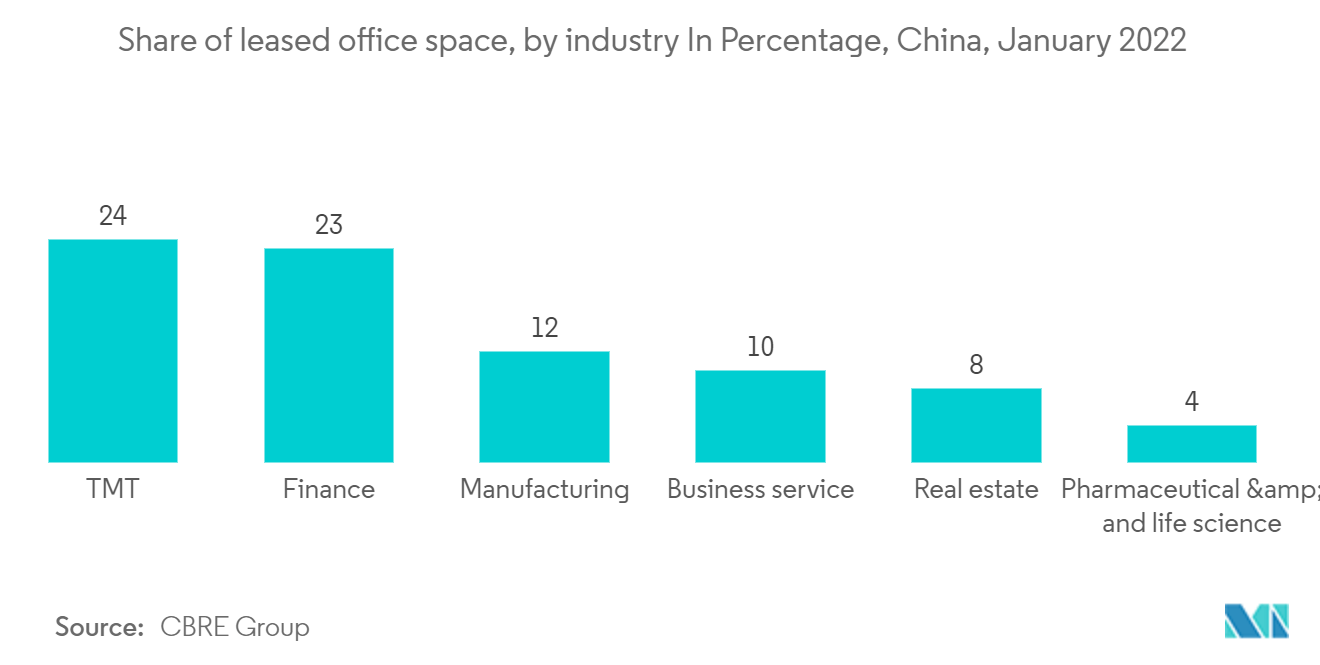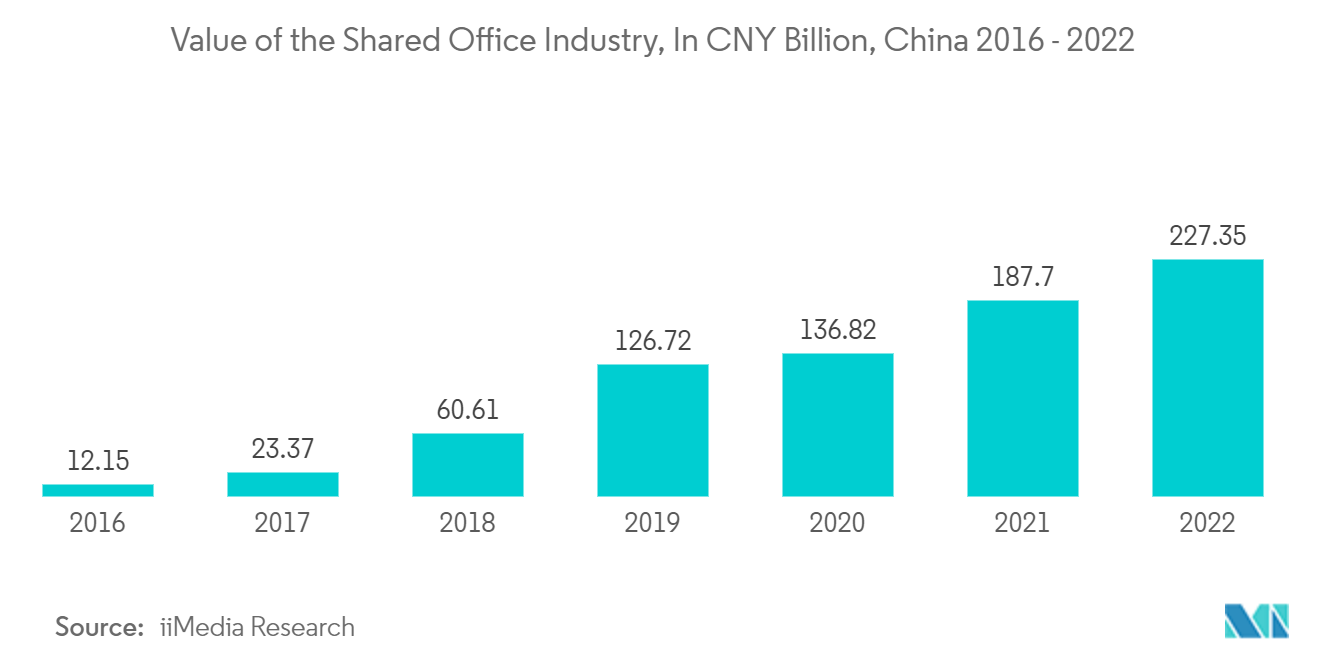Market Trends of China Office Real Estate Industry
Robust Leasing Demand For the Office Spaces Driving the Market
In Q2 2021, robust leasing demand pushed up nationwide net absorption to 2.09 million sq. m., slightly below the record quarterly high. Tier 1 cities account for over 50% of overall net absorption, while other tech-driven Tier 2 cities, such as Chengdu and Hangzhou, registered 100,000 sq. m. to 200,000 sq. m. of demand. The overall vacancy rate has been pushed down 0.6 percentage points to 22.2% by robust demand, and nationwide office rents fell by 0.2% year over year.
In the last year of 2021, Beijing's office market set a new high as demand soared following the disruption caused by the COVID-19 outbreak, which could raise future expectations. The net absorption of the capital's Grade A office space reached about 1.02 million square meters in 2021, 5.7 times higher than that of 2020. It marked the second time the data exceeded 1 million after 2010. The demand came mainly from information technology and finance companies, which contributed 41.7 percent and 21.9 percent of the total transaction area.
Tencent, Byte-Dance, Alibaba, Huawei, Meituan, and Amazon, among others, contributed to several new bulk lease transactions last year, with rental areas exceeding 5,000 square meters. As a result of growing demand from top internet companies, four of the A-grade office markets in the city Financial Street, Zhongguancun, Wangjing, and the area of Ya'ao recorded a vacancy rate lower than 10 percent.

Demand for Co-Working Spaces Driving the Market
Over time, the number of co-working office spaces has increased dramatically. In addition, Beijing and Guangzhou are expected to be the leading cities in this industry, with a high number of co-working spaces. Meanwhile, Beijing remained a key commercial hub in the country, with most companies opting for coworking and shared office spaces. The second-largest coworking market in China is Wuhan, which has shared offices that attract a diverse spectrum of tenants, including major corporations, government agencies, and startups.
The majority of freelancers, entrepreneurs, and small and medium-sized businesses (SMEs) are using co-working spaces. Because they offer excellent features and amenities like high-speed internet, 24-hour access to office space and meeting rooms, furnished and unfurnished offices, and so on. Furthermore, serviced offices (which comprise both creative and traditional offices) account for the majority of the co-working office space.
Despite the fact that China's SME sector is growing at a slow pace, the rising cost of business operations, which includes high commercial property rental costs, has prompted many aspiring small firms to seek for more cost-effective options. As a result, China is presently experiencing a major growth in the co-working culture, with co-working spaces popping up all over the country.

